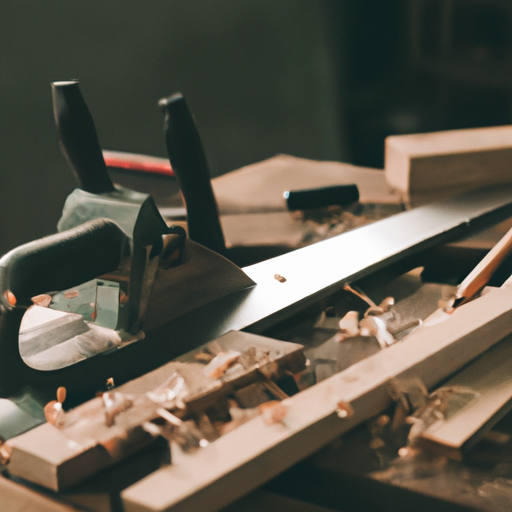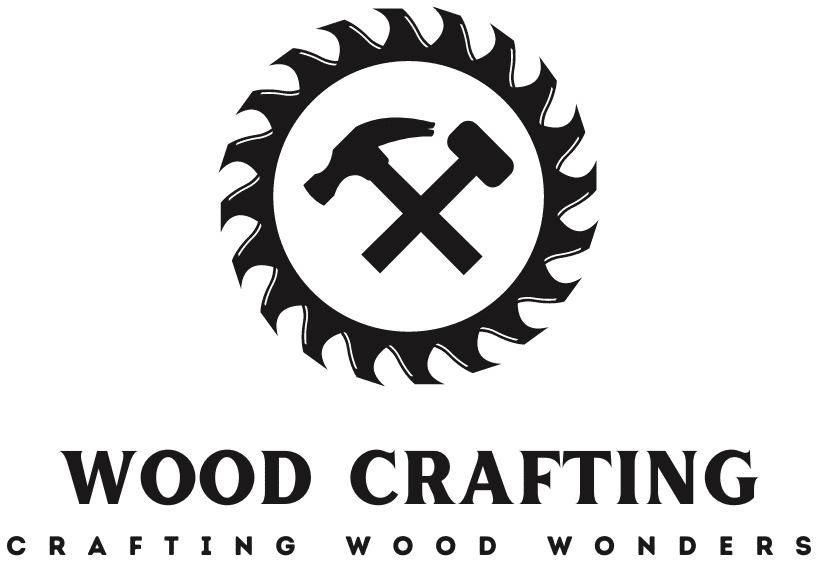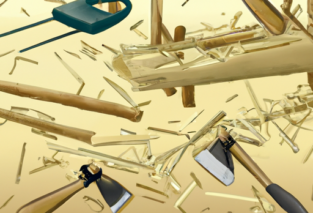In this article, we will discuss the essential tools that you need to start woodworking. Whether you’re a beginner or looking to expand your collection, we’ll cover the basics that will help you get started. From measuring and cutting to joining and shaping, you’ll learn about the must-have tools that will enable you to create beautiful woodcrafts. So, if you’re ready to embark on your woodworking journey, keep reading to discover the essential tools you need to have in your workshop. Starting woodworking can be an exciting and rewarding hobby. Whether you’re interested in creating furniture, decorative pieces, or intricate woodworking projects, having the right tools is essential for success. In this article, we will explore the essential tools needed to start woodworking, from safety gear to storage and organization tools. By investing in these tools, you can ensure your safety, accuracy, and efficiency in your woodworking projects.
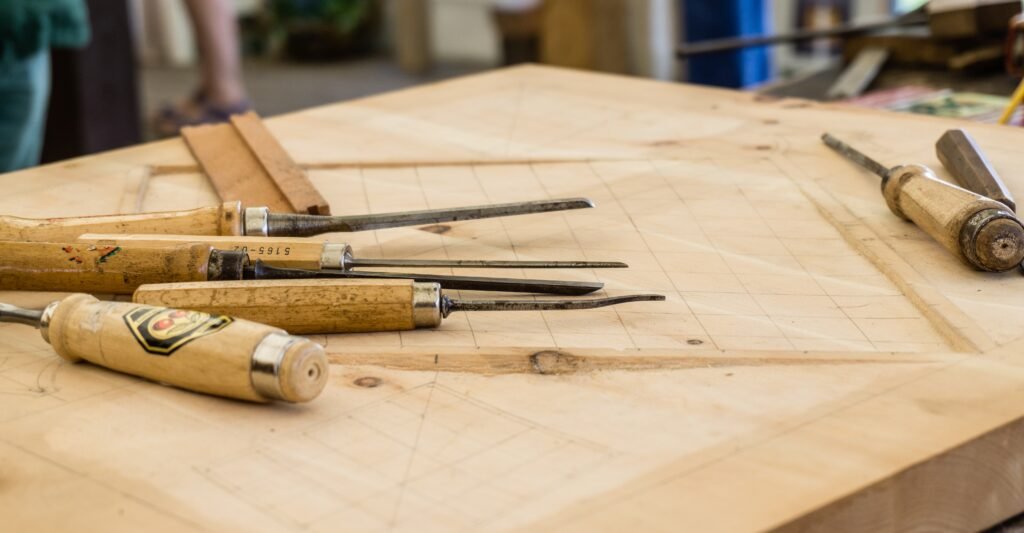
1. Safety gear
Safety glasses
Protecting your eyes is crucial when working with wood. Small wood particles, flying debris, or even a stray wood chip can cause serious eye injuries. Investing in a good pair of safety glasses will provide the necessary protection and prevent any accidents from happening. Safety glasses come in various styles and designs, so choose a pair that is comfortable and fits securely on your face.
Hearing protection
Woodworking often involves loud noises, especially when using power tools. Prolonged exposure to loud noises can cause hearing damage, so it’s important to protect your ears. Earplugs or earmuffs are essential for reducing the noise level and preventing any potential harm to your hearing.
Dust mask
Woodworking produces a lot of dust, which can be harmful if inhaled. Fine wood particles can cause respiratory problems and aggravate existing conditions such as asthma or allergies. Wearing a dust mask or respirator is crucial to protect your lungs from these particles. Choose a mask that has a high filtration efficiency and is comfortable to wear for extended periods.
2. Measuring and marking tools
Tape measure
Accurate measurements are essential in woodworking. A tape measure is a basic tool that allows you to measure both length and width accurately. Look for a tape measure that has clear markings, is easy to read, and has a sturdy design. A 25-foot tape measure is a good size for most woodworking projects.
Marking gauge
A marking gauge is a tool used to make precise marks and lines on wood. It consists of a sharp blade or pin that can be adjusted to a desired measurement. By running the marking gauge along the edge of the wood, you can create accurate reference lines for cutting or joinery work.
Combination square
A combination square is a versatile tool that can be used for measuring, marking, and checking for squareness. It consists of a ruler and a square head that can be locked at different angles. A combination square is useful for checking the accuracy of angles, marking 90-degree lines, and ensuring squareness in your woodworking projects.
3. Cutting tools
Handsaw
A handsaw is a basic cutting tool that every woodworker should have. It is used for cutting wood by hand and is ideal for making straight or curved cuts. Choose a handsaw with a comfortable handle and a sharp, durable blade. A crosscut handsaw is suitable for cutting wood across the grain, while a rip handsaw is better for cutting with the grain.
Chisels
Chisels are essential for shaping and cutting wood. They are used for removing excess material, creating mortises, and refining joints. A set of high-quality chisels with different sizes will allow you to work on various woodworking tasks. Keep the chisels sharp and honed for best results.
Jigsaw
A jigsaw is a versatile power tool that can be used for cutting curves or irregular shapes in wood. It consists of a reciprocating blade that moves up and down rapidly. A jigsaw is perfect for making intricate cuts, such as cutting out patterns or shapes in wood. Look for a jigsaw with variable speed settings and a comfortable grip for better control.
4. Joinery tools
Clamps
Clamps are essential for holding wood pieces together during gluing or assembly. They provide the necessary pressure to ensure a strong bond. There are different types of clamps available, such as bar clamps, pipe clamps, or C-clamps. Choose clamps that are sturdy, easy to adjust, and have a good grip.
Mallet
A mallet is a hammer-like tool used with chisels or other striking tools. It has a larger, rounded head that provides more control and reduces the risk of damaging the wood. A wooden or rubber mallet is ideal for woodworking tasks that require controlled force without causing excessive damage.
Router
A router is a versatile power tool used for shaping, cutting, and creating decorative edges on wood. With different bits and attachments, a router can be used for various woodworking tasks, such as creating grooves, dadoes, or intricate designs. Invest in a quality router that offers adjustable speed settings and a comfortable grip for better precision.
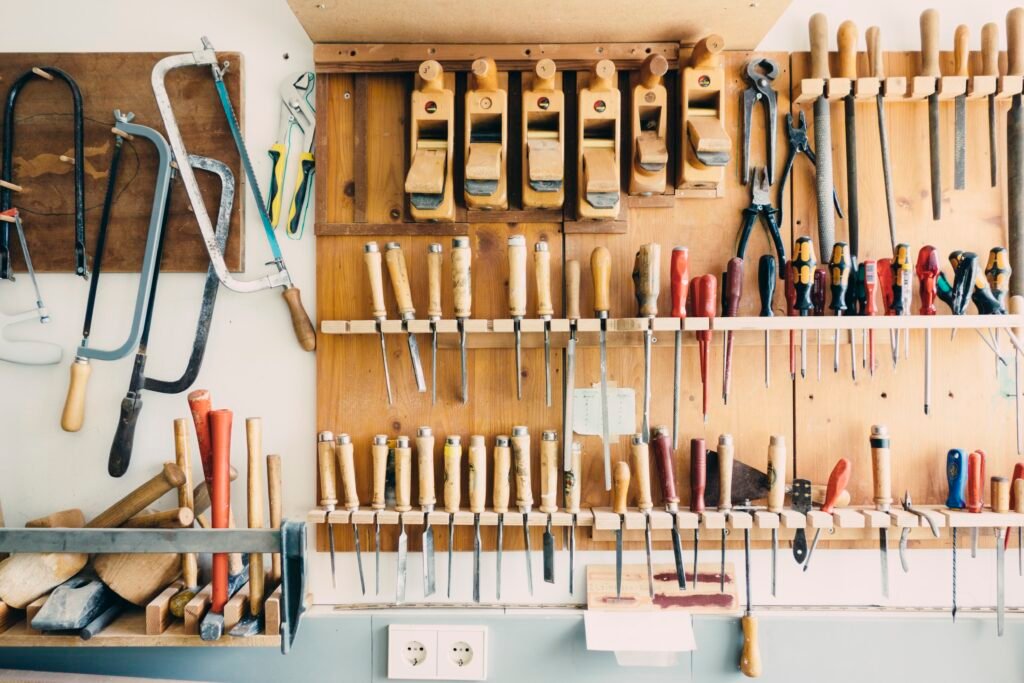
5. Power tools
Drill
A drill is an essential power tool that every woodworker should have. It is used for drilling holes, driving screws, and even sanding or polishing wood surfaces with the right attachments. Look for a corded or cordless drill with adjustable speed settings, a keyless chuck for easy bit changes, and a comfortable handle for extended use.
Circular saw
A circular saw is a powerful cutting tool used for making straight cuts in wood. It consists of a circular blade that spins rapidly to cut through the wood. A circular saw is ideal for making long, straight cuts or cutting large sheets of plywood. Look for a circular saw with adjustable depth settings, a sturdy base plate, and safety features such as a blade guard.
Random orbital sander
A random orbital sander is a versatile sanding tool that produces a smooth and even finish on wood surfaces. It has a round sanding pad that moves in both a circular and random motion, reducing the risk of leaving swirl marks on the wood. A random orbital sander is ideal for sanding large areas quickly and effectively. Look for one with adjustable speed settings and a dust collection system for cleaner and more efficient sanding.
6. Sharpening tools
Sharpening stones
Keeping your cutting tools sharp is essential for clean and accurate cuts. Sharpening stones are used to sharpen the blades of chisels, planes, or other cutting tools. Look for a combination sharpening stone with different grits for coarse and fine sharpening. Regularly sharpening your tools will prolong their lifespan and ensure better woodworking results.
Honing guide
A honing guide is a tool used to hold chisels or plane blades at a consistent angle while sharpening them on a sharpening stone. It allows you to achieve a precise and accurate bevel. A honing guide is especially useful for beginners who may struggle with maintaining the correct sharpening angle.
Bench grinder
A bench grinder is a power tool that is used for heavy-duty sharpening, grinding, or shaping tasks. It consists of a motor and grinding wheels that spin rapidly. A bench grinder is ideal for sharpening larger tools or removing excess material. Look for a grinder with adjustable speed settings and a tool rest for better control and precision.
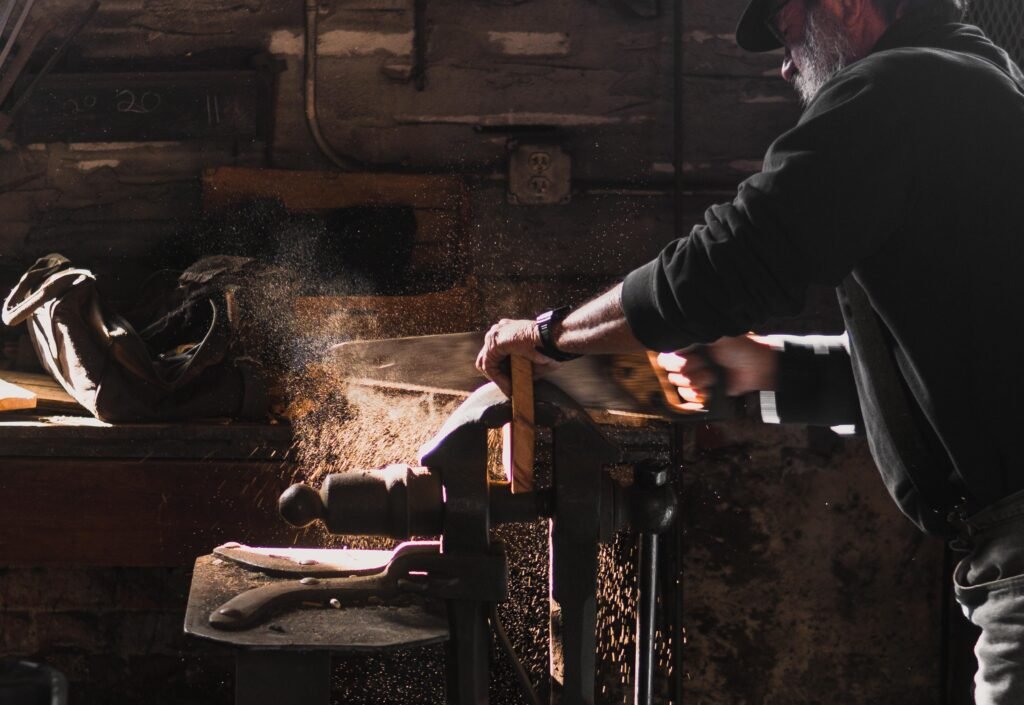
7. Finishing tools
Sandpaper
Sandpaper is essential for achieving smooth and polished wood surfaces. It comes in different grits, and choosing the right grit depends on the woodworking task. Coarse grit sandpaper is used for heavy sanding or removing material, while fine grit sandpaper is used for final sanding and achieving a smooth finish. Always sand in the direction of the wood grain for best results.
Paint brushes
If you plan on painting or staining your woodworking projects, having a selection of paint brushes is essential. Different brushes are used for different types of paint or finishes. Brushes with natural bristles, such as hog bristle brushes, are ideal for oil-based finishes, while synthetic brushes are better for water-based finishes. Choose brushes that are of good quality and clean them thoroughly after each use.
Wood stain
Wood stain is used to enhance the natural beauty of wood or change its color. It penetrates into the wood fibers, highlighting the grain pattern and adding richness and depth. There are various types and colors of wood stain available, so choose one that complements your woodworking project. Apply the stain evenly and follow the manufacturer’s instructions for best results.
8. Workbench and vice
Sturdy workbench
A sturdy workbench is an essential piece of equipment for any woodworker. It provides a stable and secure surface for working on your projects. Look for a workbench that is made of solid wood or heavy-duty materials, has a large enough work surface, and includes features such as built-in storage or a vice. A well-built workbench will make your woodworking tasks easier and more efficient.
Bench vice
A bench vice is a clamping device that is attached to the workbench. It is used for holding wood pieces securely in place during cutting, shaping, or joinery work. A bench vice should have a sturdy construction, a wide opening, and a smooth action for better grip and control. Consider having a woodworking vice that is specifically designed for woodworking tasks.
Clamping system
In addition to a bench vice, having a variety of clamps is essential for woodworking. Clamps are used for holding wood pieces together while the glue dries or during assembly. They provide the necessary pressure to ensure a strong bond. There are different types of clamps available, such as bar clamps, pipe clamps, or C-clamps. Choose clamps of different sizes and types to accommodate various woodworking projects.
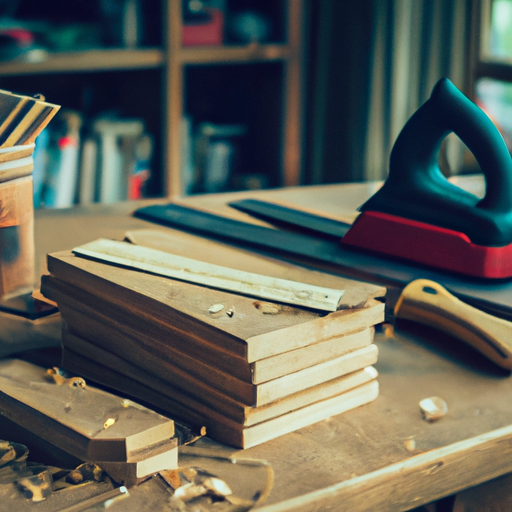
9. Storage and organization tools
Toolbox
Keeping your tools organized and easily accessible is important for a well-functioning workspace. A toolbox is a portable storage solution that allows you to keep your essential hand tools in one place. Look for a toolbox with different compartments or drawers to keep your tools organized and protected. A sturdy toolbox with a secure latching system will ensure that your tools are safely stored and ready to use.
Pegboard
A pegboard is a versatile storage system that can be attached to the wall of your workshop. It consists of a perforated board with evenly spaced holes. By using hooks or pegs, you can hang your tools on the pegboard, keeping them visible and within reach. A pegboard is a great way to maximize storage space and keep your tools organized in a small workshop.
Tool storage cabinet
For larger workshops or a growing collection of tools, a tool storage cabinet is a great investment. It provides ample space for storing and organizing your woodworking tools. Look for a cabinet with adjustable shelves, drawers, or compartments to accommodate different sizes and types of tools. A tool storage cabinet with locking doors will ensure that your tools are secure and protected.
Conclusion
Starting woodworking requires a range of essential tools. Safety gear, measuring and marking tools, cutting tools, joinery tools, power tools, sharpening tools, finishing tools, workbench and vice, storage and organization tools, as well as reference materials are all important for beginners. By investing in these tools, you can ensure your safety, accuracy, and efficiency in your woodworking projects. Whether you’re a beginner or have some woodworking experience, having the right tools will set you up for success and allow you to explore the endless possibilities of woodworking. So, gather your essential tools and let your creativity and craftsmanship shine in your woodworking journey.
